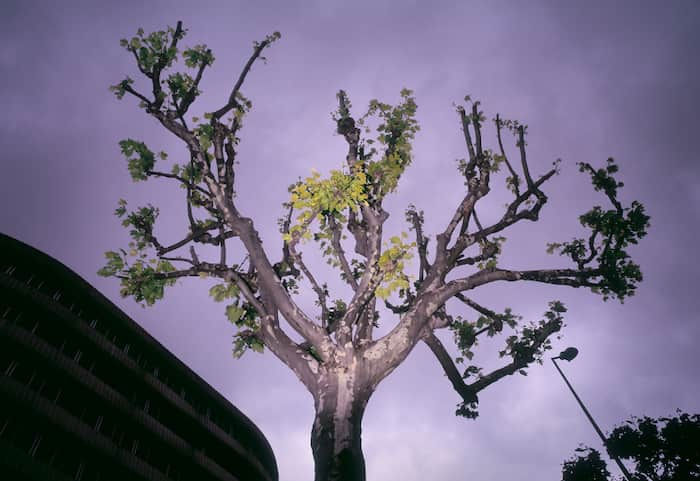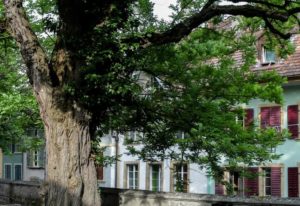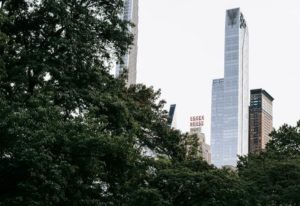Just like people, plants and trees also get sick. When they are under the weather, you will see signs of diseases. Illnesses, and pests. One of the most common signs of tree problems is yellowing leaves. Once you’ve noticed that leaves are turning yellow, it’s now time to conduct an inspection or call a tree service company.
There are several causes for yellowing leaves on trees and plants, such as environmental conditions, soil quality, pests, and so much more. With close observation, you can pinpoint the problem and help your trees return to their green glory.
This blog post will help you determine the causes and solutions to have rich, green leaves that will enhance the appearance of your landscape:
Overwatering
When the tree roots are filled with too much water, they cannot absorb the oxygen and nutrients they require. The roots will get suffocated because there is too much water and too little air. Later on, this will cause them to decay and become less vigorous, leading to yellowing leaves. Overwatering will make the mature leaves turn brownish-yellow, wilt, and eventually fall off.
Before watering, check the moisture level in the soil. Stick a screwdriver or stem into the soil. If you can’t stick it too deeply, you have well-drained soil. You may also grab a handful of soil. If it’s moist but not sopping wet, it doesn’t need more water.
Always assess your watering methods. Make sure to water deeper and less often. Do not overdo it because you only need to moisten the soil to a depth of 8 to 10 inches.
Dehydration
Underwatering trees is just as harmful as overwatering. If your trees and plants are dehydrated, they will have yellow, curled, and wilted leaves. Your trees may be not receiving adequate water, especially during the summer season. Always check the soil for signs of underwatering. Instead of frequent light watering, choose a deep watering schedule because they are more beneficial for your landscape.
Chlorosis
This disease occurs when a tree is suffering from low chlorophyll production. As many of us know, chlorophyll plays a vital role during photosynthesis. It is the green pigment that allows plants to use sunlight in converting carbon dioxide and water into oxygen and glucose.
Chlorosis is brought about by iron deficiency, overwatering, high soil pH, or root damage. When the deficiency persists, the leaves will slowly turn a yellow-green color until the leaf edges become brown.
Nutrient Deficiency
Aside from iron, trees need essential minerals like calcium, nitrogen, magnesium, potassium, and zinc to function properly. If these elements are insufficient, the trees may become weak and turn yellowish in color.
To address nutrient and mineral deficiency, always test the soil to determine fertility and add supplements to improve the health of your soil. Maintaining a rich and fertile environment for your trees is part of your responsibilities as a landscape owner.
Too Much Sunlight
Plants need sunlight for food and nutrient production. However, too much is always bad. When your trees and shrubs experience heat stress, yellow leaves and dark burn-like spots may appear. If you have small plants that haven’t fully grown, move them to a place without direct sunlight. During the hot summer months, you may screen them in the mid-afternoon to prevent sunburn.
Pests
Yellowing leaves may be due to existing pest infestation. Signs of pests may vary but the most common symptom is curled and yellow leaves. Once this occurs, you should call a tree expert to apply effective pesticides that can get rid of insects and bugs. A tree professional will help you identify the type of pest by conducting a risk assessment. After the inspection, they will recommend the best treatment for your landscape.
These insects will cause damage to newly planted and fully grown trees. Here are the most common garden pests that you need to watch out for:
- Aphids
- Beet Leafhoppers
- Mites
- Earwigs
- Mealybugs
- Thrips
- Scale
- Whiteflies
Always make it a habit to monitor your trees for signs of infestation. Proactive treatment is the best treatment. To prevent pests, you may also wash your plants with an insecticidal or horticultural soap that is safe and effective to use.
Don’t Worry About Yellowing Leaves Too Much
With the right treatment and approach, you can bring the lush appearance of your trees and shrubs. At Midstate Tree Service of Harrisburg, we can help you identify tree problems and before they become an emergency.
Don’t wait until the leaves turn dull and yellow! Do yourself and your tree a favor by seeking the advice of a tree service company! Our dedicated team offers tree care, trimming, removal, and other value-added solutions! Contact us today to schedule a consultation.



